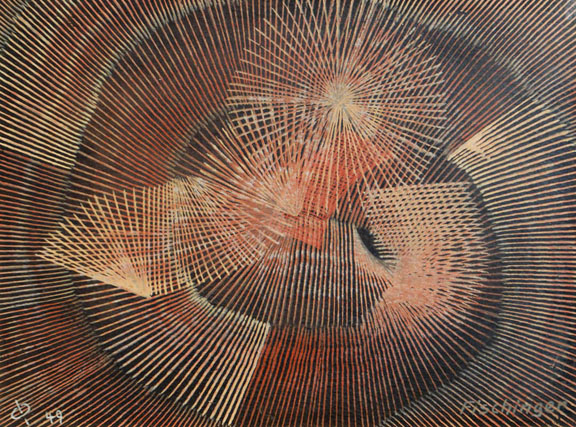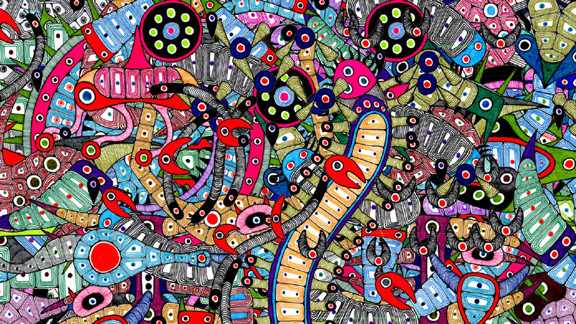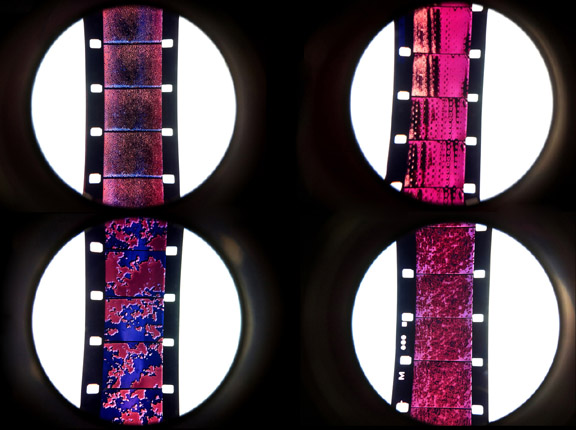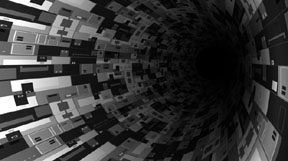art3810 Experimental Animation
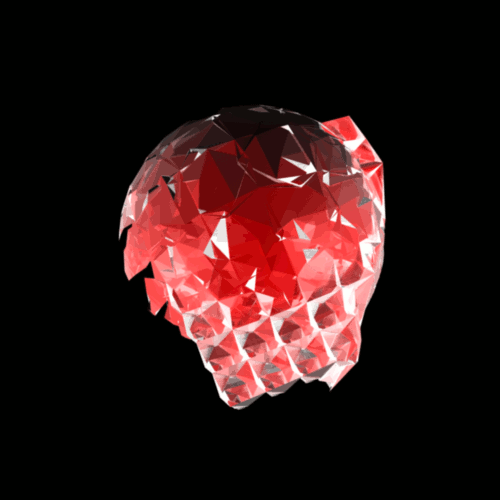
Fall 2020
CSULA
Professor Jim Ovelmen
jovelme@calstatela.edu
LAB HOURS (for working labs outside of class)
CAL icon for all DUE DATES
PINK icon for all assignment formatting
TRICOLOR icon to return to ovelmen syllabi
Department of Public Safety/Security 323-343-3700
OfficeFA 227,Office Hours (see syllabi page), on Zoom. Course Length15 weeks + finals day, Meeting Time: Saturdays 2pm-6:25pm,Class Location: CANVAS, Term/Year FALL 2020
Prerequisites: ART 2800, ART 3780.
COURSE DESCRIPTION
There is a rich history of experimental (non-narrative) animation in Southern California.
ART 381 Experimental Animation provides a laboratory environment that is necessary for students to discover and explore methods of visual expression in animation, while not being tasked with rigid narrative structure.
The course provides a context for students to develop
a unique artistic voice in creative animations that are visually based,
and to experiment with various materials. Throughout the course, students
are encouraged to develop their curiosity and imagination, both crucial
in producing personal, experimental animations.
INSTRUCTIONAL METHODS/CONTENT
(1) Study of the history of experimental
animation in the United States and other countries.
(2) Production of experimental animation projects that
combine materials, approaches, and digital and analog techniques.
(3) Exploration of the use of audio or music as a structure
for experimental animation projects.
(4) Development of creative approaches to content in
experimental animation that provides both creative visual communication
and personal expression.
(5) Research of films, visual art, animation and interactive
art that provides inspiration for mixed media animation environments.
(6) Creation of resources used for experimental animation.
(7) Class critiques that provide content-based feedback
and critical analysis of student projects.
LEARNING OUTCOMES
(1) Demonstrate a strong command of color, composition,
and abstract
image-making for animated projects.
(2) Appreciate and demonstrate an understanding of layered
visual information, and more sophisticated interpretations of timing and
movement.
(3) Experiment with innovative methods in the development
of animation projects, based on a strong background in investigative and
imaginative skills.
(4) Produce animation work that demonstrates a diverse
and wide range of
non-narrative animation techniques.
(5) Pursue original experiments in animation based on
a self-reliant attitude.
STUDENT RESOURCES
technical
STOP MOTION
Dragonframe
AFTER EFFECTS
ART MATERIALS
Stats (decor)
cerebral
FILM FORUM
MOCA
LACMA
SUNDANCE
ANN ARBOR FILM FESTIVAL
INDEPENDENT ANIMATION
ONLINE ART/ANIMATION
youtube
SUGGESTED TEXTS
Anker, Steve; Geritz, Kathy and Seid, Steve. Radical Light: Alternative Film and Video in the San Francisco Bay Area, 1945-2000. University of California Press, 2010.
Brakhage,
Stan and McPherson, Bruce R. Essential Brakhage: Selected Writings on
Film-Making. McPherson, 2001.
Foster, Gwendolyn Audry and Winston-Dixon, Wheeler. Experimental Cinema: The Film Reader. Routledge, 2002.
Furniss, Maureen. Art in Motion: Animation Aesthetics (revised edition). John Libbey Publishing, 2008.
Giambruno, Mark. 3D Graphics & Animation. New Riders Press, 2002.
Good, Howard and Borden, Sandra L. Ethics and Entertainment: Essays on Media Culture and Media Morality. McFarland, 2010.
Perlich, John and Whitt, David. Millennial Mythmaking: Essays on the Power of Science Fiction and Fantasy Literature, Films and Games. McFarland, 2009.
Robinson, Chris. Animators Unearthed: A Guide to the Best of Contemporary Animation. Continuum, 2010.
Rush, Michael. Video Art (second edition). Thames & Hudson, 2007.
Russett,
Robert and Star, Cecile. Experimental Animation: An Illustrated Anthology.
Van Nostrand Reinhold Inc., 1977.
Sitney, P. Adams. Visionary Film: The American Avant-Garde, 1943-2000
(third edition). Oxford University Press, 2002.
Skoller, Jefferey. Shadows, Specters, Shards: Making History in Avant-Garde Film. University of Minnesota Press, 2005.
Turvey,
Malcolm. The Filming of Modern Life: European Avant-Garde Film of the
1920s. The MIT Press, 2011.
Wells, Paul. Animation – Genre and Authorship. Wallflower Press, 2002.
Wells, Paul; Hardstaff, Johnny and Clifton, Darryl. Re-Imagining Animation: The Changing Face of the Moving Image. Ava Publishing, 2008.
REQUIRED SUPPLIES
DICK BLICK 44 South Raymond Avenue Pasadena, CA
91105
(626) 795-4985
scissors, item: 57037-1005
19"x25" Black Canson Art Paper (50 sheets) item: 11273-2002
fadeless Art Paper, (Apple Green) 24"x12 feet (roll) item:12915-7172
white artist tape, 3/4" item: 24124-1034
Polymer Clay, assorted colors (Staedtler Fimo)
exacto knife, item: 57409-0000
cutting matte, 8½" × 12", item: 57522-7512
Portfolio (red wallet), 20" × 26", item: 15105-1001
Acetate bags, 10-pack, 14" × 16", item: 16969-1004
zipper bag, 12" × 16", item: 16974-2016
14"x17" Strathmoore 100-st Sketchpad (about $12)
9"x12" Canson Field Sketchbook (about $13)
Plastic Art Box 12x5x6" (about $5)
100-pack Blank Index cards (no lines)
Large Binder clips
INTRODUCTION
What is EXPERIMENTAL ANIMATION? and WHY IS IT IMPORTANT to DEVELOPING ARTISTS?
There is a long rich history of experimental animation right here in Southern California -artists whose mode of operation required an exploratory rather than prescribed determination. Exploratory may sound somewhat negligent, chaotic, or may possibly imply a symptom of a confused or haphazard author. However, when exploration is undertaken in responsible ways, it can be an abundant feeder to creative identity. If the artist is committed to the project and the outcome, the revelation of the experiment can affirm something profound. Even in reality, when we clearly know what we want to create, it is hidden from us until we actually make it. Experimental works can be triumphs of vision and imagination that began from belief in pursuing a worthwhile chain of events. These events may not follow conventional rules of narrative or story, but may follow its own structures and rules –or even governed by degrees of randomness or chance!
EXPERIMENTAL ANIMATION is work valued mainly on its unique visual strategy or exploratory achievements. "Experimental" does not mean there can't be figures, recognizable objects, identities, or uses of story. It may mean that narrative is not the sole aim of the animation. Most successful animations have a structure and a strategy, but not every animation has a story or had required a storyboard. All over the world, there are artists and filmmakers that use space, time, and animated imagery in the name of experimentation. In this class we will create experimental animations. I will show you examples of works from all over the world and student projects from previous classes. You will receive specific assignments. You may create animated works that are visually captivating, moving, expressive, abstract, funny, peculiar, strange, inspired or emotional in an equally dramatic way to any conventional narrative work.
If you don't believe that the practice of experimentation benefits overall creativity, just research what some of the most successful artists and directors say on the subject of imagination. The ability to realistically visualize, relates to familiar interactions in the world. The more you responsibly experiment, the more you know what is possible in reality. It becomes easier to realize the end of something when you have sampled the beginnings of many. Patience at experimentation promotes decisiveness for the developing artist. This may seem counterintuitive! But for an artist just starting to define themselves and a personal style, experimentation is not wasted time. Why? because experimenting allows you to witness many results of things that you don't use, in order to identify and value things that you do use. The experimental process also promotes technique diversity for artists who may be "stuck" in the habits of their own style. It may force them to advance into creative territories, out of their comfort zones, where new visions or methods may be realized. Experimental does not mean the work is unorganized, unfinished or unprofessional! Just ponder: -isn't the first application of any mature art medium experimental? Wasn't a first attempt to create animation a kind of organized experiment? There always was a first. (although credit or fame may often be ascribed inaccurately). Anything conventional was initially experimental. Any tradition begins with someone doing something novel and untried.
Practicing experimental animation can build confidence and faith in ourselves as a developing artists. How? Experimentation allows our ego to recede, and allows us to be mindful of changeability, and the receptivity of nature directly in front of us. We are focused on our immediate synergy with reality. We are trying things now, and observing what works best. We are in a mind-state of wonder and action, not self-preoccupation, or doubt. Experimenting fosters the strength to try things without apprehension of failure; and builds courage to enter the unfamiliar. We will learn from the greats in experimental and time-based art and filmmaking, but what you create in this class will be far more valuable and important, because it is your experimentation. This is a class where you will develop an artistic self-reliance by letting go of pre-conceived practices, and open ourselves to something new. You will be evaluated on the outcomes of your imagination: the inventiveness of your animations, and the completion and dedication to each assignment. Your success and satisfaction in the class may be related to how resourceful you can be.
watch these experimental animations:
- Mizue Marai Chaotic Order, Jam, Modern
- Jordan Belson World (excerpt), Bardo(excerpt)
- Harry Everett Smith Abstractions
- Oskar Fischinger Optical Poem
- Stan Brakhage The Dante Quartet
- Jennifer Steinkamp The Wreck of Damaru
- Miwa Matrayek, performance animation
Saturday, August 22
We will be using very diverse tools and approaches to create the experimental animation projects.
We will use physical art materials, direct action, stop motion, as well as CGI and digital animation techniques with MAYA and AFTER EFFECTS to achieve our goals. Because we are not of course living in the 1930's or 70's, our pioneering spirit will match the early experimental animators, yet we will also use contemporary digital software as well.
Intro to Entity 1 CGI (DUE Week 4)
see past student work (must log-in csula account)
Homework for due next week: create a flip-book animation with 100 blank index cards. use a LARGE BINDER CLIP to bind one edge. Create a morphing entity flipbook animation. Change its size, shape, or appearance over 100 cards. you may spend 2-3 hours doing this. Don't think too much about what you are drawing, just keep your hand moving and let it freeform. If you have more time, add more detail. Use black markers or micron pen. Color not necessary.
continue working on your ENTITY-part1, and have partial test renders ready for critique
Saturday, August 29
-FLIPBOOK HOMEWORK DUE
-show any render test you have for Entity-part1
-continue to work on Entity-part1, use Maya, render, and follow new techniques to prepare for final render.
-begin to gather and organize found materials and objects for stop-motion.
DEMO on DYNAMICS in MAYA, and using particles, rendering and lighting, Demo on tunnel effects in Maya, and other special effects
watch these now!:
David Guetta - Visuals(click)
Amoeba Presents Microglitchmachinefunk(click)
Ellector(click)
Entering The Stronghold(click)
Fire Flower by Pierre Michel (click)
Fleer Ultra.(click)
Dumserum.(click)
Glitch MT(click)
Hello, I Like You (click)
Jemapur - Clarte (click)
Old Black -- Egyptrixx Feat. Ohbijou (click)
Stateless - Ariel (click)
For Homework viewing:
Lotte Reineger
Anthony Lucas
Saturday, September 5
Homework (continued from last class) Gather AT LEAST 20 SMALL items each. Any team member not contributing will be impacted in participation. Each item must be distinct. Not 20 coins or buttons. Altogether, you should have about 80-100 items.
Do not use toys, or commercial products. Gather PARTS of man-made or natural objects.
you may create abstract or recognizable entities out of the parts. You must follow all the specs, see project description
watch this now:
Automatic Writing, William Kentridge (click)
The Shrine, An Argument (click)
Yonder (click)
Amstell (click)
Kiss, A Love Story (click)
Crazy (click)
Sauvage [Extrait] (prix special du jury pour un film de fin(click)
Red river bay.mp4 (click)
Una Pieza M S - Marian Ruzzi y Sr. Amable(click)
Haven't Been Yourself (click)
Mykonos (click)
Air: Sing Sang Sung (click)
How Lighting changes everything
Animated Surface Alternatives/Projection Alternatives:
Scintillation(click)
Anim - Run by VJsuave(click)
BLU Combo (click)
building mapping (click)
StopMo equipment
Maya
After Effects
Using Camera in After Effects (basic)
After Effects Keyboard Shortcuts
Saturday, September 12
DUE: Entity1-CGI
Intro to Entity2 stop-motion(Due WEEK 7)
project description (see Canvas)
see past student work (must log-in csula account)
production on Entity2 Stop-Motion
Artist's Wildly different approaches in stop-motion, the medium is the message.Allison Schulnick, stop-motion blog Dragonframe
Media Artists (via Joshua Mosley):
Joshua Mosley (Dread), (Cow to Pascal, Rousseau and Dread)
William Kentridge (Automatic Writing)
Saturday, September 19
production on Entity2 stop-motion
Saturday, September 26
production on Entity2 stop-motion
Paper and projection MOCA Taipei
Saturday, October 3
DUE: Entity2 stop-motion
Intro to animated backgrounds
see past student work (must log-in csula account)
project description (See Canvas)
Saturday, October 10
production on animated background
StopMo shorts
head over heels, head over heels
scintillation, the shrine, out of a forest, much better now, something left
the deep end, fresh guacamole, street of crocodiles, dimensions of dialog, darkness light, Mary and max, clip2, trailer
Saturday, October 17
ENTITY3 (landscape + entity): DUE Week11
You are to put all these parts together in AFTER EFFECTS
- ENTITY-1 virtual=(Maya/digital animation)
- ENTITY-2 actual=(StopMo animation)
- Animated background =(StopMo or CGI motion landscape/tunnel)
- ENTITY-3 (put all together in After Effects)
You must put the entity on a journey. It is your choice whether you would like to
Using After Effects, bring all your work together into a final piece.
The Final Entity is to be at least 5 minutes and may contain a music or ambient soundtrack.
Use AFTER EFFECTS to dynamically match and creative compose the different parts of the ENTITY project.
You must color correct, mesh together, and balance all the different segments to seem like one image. Strive for the whole work to map a journey and to not feel repetitive or seem repetitive.
Saturday, October 24
production on Entity3
Saturday, October 31
DUE: Entity3 (landscape + entity)
Introduction to FINAL PROJECT
A Fluid Expression
see past student work (must log-in csula account)
using a combination of all the tools and techniques that you have learned so far, create an experimental animation that does not have or keep definite edges or form.
In contrast to the midterm, where the "Entity" is a "thing" or animated "object", think about a flowing animation, that has no certain boundaries. Think about things that constantly reshape. Liquids, atmospheres, lights, etc., are obvious examples, but you could use actual materials in a very unique way to suggest "fluid".
You are encouraged to combine different techniques from stop motion and experiment with "fluid" materials. It could be anything from milk, to paint, to salt or ink. YOU MUST KEEP AREAS CLEAN/prevent mess and clean up to original state all equipment!
you may work individually or in groups. You should produce about one-minute of animation per person.
no narrative, figures or recognizable imagery is required, however is not prohibited.
you may use music and/or custom sound that matches or enhances the look and feel of your experimental animation
-Due on Finals Day, Friday of Week 11
-HD1080 in size, H.264 compression,
-and at least one minute of animation per person.
Themes:
Even though there is no "story", you need a structure or thematical idea.
So we will look for examples and themes that have emotional or structural contrast:
-birth and destruction
-growth and decay
-purity and contamination
-ethereal uplift and damnation
-chaos and order.
..come up with your own two opposing emotions or motives for your work!
When you present your final animation on Finals Day, let us know what themes/structure you intended.
See ALL the links on the right, for some ideas, directions and visualization of many kinds of experimental animations that has a flowing nature.
You will be evaluated for how creatively and imaginatively that you achieve the animated results, as well as the technical achievement of your work.
Examples of Experimental Animation and/or ideas for "Fluid Expression"
Erick Oh: Symphony
Saturday, November 7
production on FINAL PROJECT (Fluid Expression)
Saturday, November 14
progress presentation of FINAL PROJECT
Last lecture before Final Day Presentation
USE THIS DAY TO WORK ON AFTER EFFECTS AND FINALIZE YOUR WORK TO BE PRESENTED
..next week:
Saturday, Nov 28, break -no class
Saturday, November 21
continue working on Final Project
Saturday, December 5
WEEK 16- FINALS WEEK
Present FINAL PROJECT
Experimental Animation FINAL:
Saturday Dec 12th, TBA* FA225
*this time is determined by University Requirements. If class enrollment is full, Final Presentations may go into overtime.
FINAL PROJECT (Fluid Expression) is DUE
ASSESSMENT PROCEDURES
SEE CANVAS for details on ALL GRADING, ATTENDANCE, and ASESSESSMENT proceedures
METHOD OF EVALUATION
Homework assignments will be given points based on accurate completion of assigned readings, assignments and tutorials.
The Midterm and the Final project will graded based on these criteria:
*Quality of Movement/Timing
*Visual Appeal
*Amount of Experimention
*Dedication and Completion
Each given an equal weight of 20%, to compose your grade for each project
Critical review of your work will provide the source most assessments. Participation grade includes the extent and quality of the participation in the critiques, presentation of projects and positive interaction with classmates and professional approach toward the class. Students requiring any kind of special assistance should speak with the instructor.
ASSIGNMENTS
Participation % 10
Homework % 15
Entity1 (cgi): %10
Entity2 (stopmotion): %15
Entity3 (entity+background) %20
Fluid Expression (Final Project) %30
GRADE SCALE: A 90%-100%B 80%-89%C 70%-79%D 60%-69%F Below 60%
LATE WORK
ANY ASSIGNMENT TURNED IN LATE we be REDUCED a LETTER GRADE per CLASS LATE. Also, if turned in late, you will not have the chance to redo the assignment for an improvement grade!
MAKE UP WORK
If an assignment is turned in on time, you may have the opportunity to REDO and resubmit the project by the end of the semester for improvement points.
Late assignments, or absences due only to emergency or illness may be accepted by the professor only according to published university policy.
